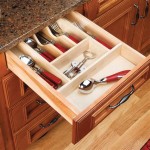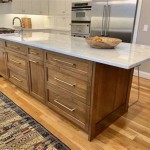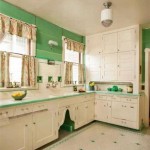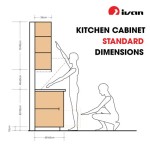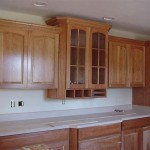Waxing Wooden Kitchen Cabinets: A Comprehensive Guide
Wooden kitchen cabinets provide warmth, character, and timeless appeal to any kitchen. However, maintaining their beauty and protecting them from daily wear and tear requires consistent care. One effective method for preserving and enhancing the natural beauty of wooden cabinets is waxing. This article provides a comprehensive guide to waxing wooden kitchen cabinets, covering preparation, application, and maintenance techniques.
Waxing wooden cabinets offers several benefits. It creates a protective layer that shields the wood from moisture, spills, and everyday scratches. This protective coating helps to prevent water damage and discoloration, prolonging the life of the cabinets. Furthermore, wax enhances the wood's natural grain and adds a subtle sheen, enriching its aesthetic appeal. The application process, while requiring some time and effort, is relatively straightforward and can be undertaken by most homeowners.
Key Point 1: Preparing Wooden Kitchen Cabinets for Waxing
Thorough preparation is crucial for achieving optimal results when waxing wooden kitchen cabinets. The goal is to create a clean, smooth surface that will allow the wax to adhere properly and provide maximum protection. This process involves several steps, starting with cleaning and inspection.
Begin by removing all items from the cabinets, including dishes, utensils, and food items. This will provide unobstructed access to the surfaces needing treatment. Next, thoroughly clean the cabinet doors, drawers, and frames. This can be achieved with a mild detergent solution. Mix a small amount of dish soap with warm water and use a soft cloth or sponge to wipe down all surfaces. Pay close attention to areas that are prone to grease and grime buildup, such as around the stove or sink.
For stubborn dirt or grease, a specialized wood cleaner may be necessary. These cleaners are formulated to remove contaminants without damaging the wood finish. Follow the manufacturer's instructions carefully when using these products. It is generally recommended to test the cleaner in an inconspicuous area first to ensure it does not cause any discoloration or damage.
After cleaning, rinse the cabinets with clean water to remove any remaining detergent residue. Use a fresh, damp cloth to wipe down all surfaces. Allow the cabinets to dry completely before proceeding to the next step. Drying time will vary depending on humidity levels and ventilation, but typically takes several hours.
Once the cabinets are dry, inspect them for any scratches, chips, or other imperfections. Minor scratches can often be addressed with touch-up markers or furniture repair crayons designed for wood. Deeper scratches or chips may require more extensive repairs, such as filling with wood filler or patching with a wood veneer. Ensure any repairs are completed and allowed to dry and cure fully before waxing.
Finally, lightly sand the cabinets to create a smooth surface for the wax to adhere to. Use fine-grit sandpaper (220-grit or higher) and sand in the direction of the wood grain. This will help to remove any minor imperfections and create a slightly rough surface that will allow the wax to grip better. Wipe away any sanding dust with a tack cloth before proceeding.
Key Point 2: Applying Wax to Wooden Kitchen Cabinets
The application of wax is a critical step in protecting and enhancing wooden kitchen cabinets. Selecting the right type of wax and applying it correctly will ensure a durable and attractive finish. There are several types of wax available, each with its own unique properties. Paste wax is a popular choice for wooden cabinets due to its durability and ease of application. Liquid waxes are also available, but they tend to be less durable and require more frequent reapplication.
When choosing a wax, consider the existing finish on your cabinets. If the cabinets have a stain or paint, choose a wax that is compatible with that finish. Some waxes may be formulated specifically for certain types of wood or finishes. It is advisable to read the product label carefully and test the wax in an inconspicuous area before applying it to the entire surface.
Prior to application, gather the necessary supplies, including the wax, a clean lint-free cloth, and a wax brush (optional). The wax brush can be used to apply wax to intricate details or hard-to-reach areas. A clean lint-free cloth is essential for applying the wax evenly and buffing the surface to a shine.
Apply a small amount of wax to the cloth or brush. Work in small sections, applying the wax in a thin, even layer. Avoid applying too much wax, as this can result in a sticky or uneven finish. Apply the wax in the direction of the wood grain, using a circular motion to ensure even coverage. Overlapping strokes are recommended to avoid leaving any gaps or streaks.
Allow the wax to dry for the recommended time specified by the manufacturer. Drying time can vary depending on the type of wax and the ambient temperature and humidity. Typically, it takes around 20-30 minutes for the wax to dry to a haze. Once the wax is dry, buff the surface with a clean, lint-free cloth. Use a circular motion and apply moderate pressure to remove any excess wax and create a smooth, even sheen.
For a higher gloss finish, multiple coats of wax may be applied. Allow each coat to dry completely before applying the next. Buff the surface after each coat to achieve the desired level of shine. Remember that excessive waxing can lead to buildup and a dull appearance, so it is best to apply wax sparingly and buff thoroughly.
Key Point 3: Maintaining Waxed Wooden Kitchen Cabinets
Once the wooden kitchen cabinets have been waxed, maintaining the finish is essential for preserving their beauty and protecting them from damage. Regular cleaning and occasional re-waxing will help to keep the cabinets looking their best for years to come. Cleaning waxed cabinets requires a gentle approach. Avoid using harsh chemicals or abrasive cleaners, as these can strip the wax finish and damage the wood. Instead, use a mild detergent solution or a specialized wood cleaner to remove dirt and grime.
Wipe down the cabinets with a soft, damp cloth, being careful not to saturate the wood. Dry the surface thoroughly with a clean, dry cloth. For stubborn stains or spills, use a slightly stronger cleaner, but always test it in an inconspicuous area first to ensure it does not damage the finish. Regularly dust the cabinets to prevent dust and debris from accumulating. Use a soft cloth or a microfiber duster to remove dust from all surfaces, including the cabinet doors, drawers, and frames.
Re-waxing the cabinets will provide additional protection and enhance their appearance. The frequency of re-waxing will depend on the level of use and exposure to moisture and spills. Generally, it is recommended to re-wax the cabinets every 6-12 months, or as needed. Before re-waxing, clean the cabinets thoroughly to remove any dirt or grime. Allow the cabinets to dry completely before applying the wax.
Follow the same application process as described earlier, applying a thin, even layer of wax in the direction of the wood grain. Allow the wax to dry completely before buffing the surface to a shine. If the cabinets are heavily used or exposed to a lot of moisture, consider applying a second coat of wax for added protection.
In addition to cleaning and waxing, consider implementing some preventative measures to protect the cabinets from damage. For example, use coasters or trivets to protect the surfaces from hot dishes and spills. Wipe up spills immediately to prevent them from soaking into the wood. Avoid placing heavy objects on the cabinets, as this can cause scratches or dents. Regularly inspect the cabinets for any signs of damage, such as scratches, chips, or water stains. Address any issues promptly to prevent them from worsening.
By following these maintenance tips, the waxed wooden kitchen cabinets can maintain their beauty and functionality for many years to come. Consistent care and attention will ensure the cabinetry continues to be a focal point and a source of warmth and character in the kitchen.
Liming Wax On Oak Cabinets
Liming Wax On Oak Cabinets
Kitchen Painters How To Paint Waxed Wood Cabinets Etc
How To Update Oak Cabinets With Briwax
Home Dzine Liming Indoor And Outdoor Wood
Pin On Kitchen
How To Update Oak Cabinets With Briwax
Re Oiled Or Waxed Kitchen Cabinets Sandton Chronicle
How To Stain Dark Or Yellow Kitchen Cabinets Lighter
Refreshing Worn Wood With Briwax
Related Posts

